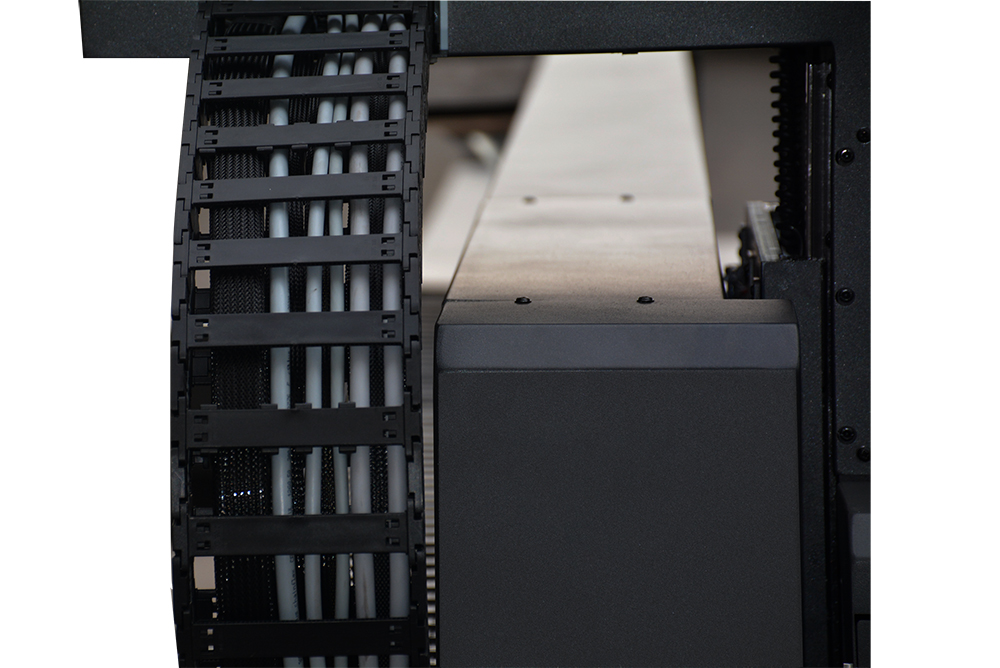UV Flatbed Printer: How to Adjust Ink Density for Optimal Print Results
UV Flatbed Printer: How to Adjust Ink Density for Optimal Print Results
UV flatbed printers are versatile and efficient devices used for high-quality printing on various materials. Adjusting the ink density is crucial for achieving optimal print results, as it directly affects the color vibrancy, image clarity, and overall print quality. In this article, we will explore the various factors influencing ink density and provide detailed steps on how to adjust it effectively.

Understanding Ink Density
Ink density refers to the amount of ink deposited on the printing material. Proper ink density ensures that the colors are rich, vibrant, and consistent, while excessive or insufficient ink can lead to poor print quality. Factors such as the type of ink, material, image requirements, and environmental conditions can significantly affect ink density.
Factors Influencing Ink Density
1. Material Properties
The type of material being printed on plays a significant role in determining the ink density. Materials with soft surfaces and large pores require more ink to achieve the desired color intensity. Conversely, harder and smoother surfaces may require less ink.
2. Image Requirements
The color depth and visual appeal of the image also influence ink density. Images with deep colors or those requiring a high level of detail will need more ink to achieve the desired effect. Additionally, if the print job requires a浮雕3D effect, additional ink layers may be necessary.
3. Ink Quality
The type and quality of ink used in the printer are crucial. High-quality UV inks ensure vibrant colors, fast drying times, and good adhesion to various materials. Poor-quality inks can lead to inconsistent results, color fading, or even printer damage.
4. Environmental Conditions
Temperature and humidity can also affect ink density. Extreme conditions can cause the ink to dry too quickly or too slowly, impacting the final print quality. Maintaining a stable environment is essential for consistent print results.
Steps to Adjust Ink Density
1. Calibrate the Printer
Before adjusting the ink density, it is crucial to calibrate the printer to ensure all mechanical components are functioning correctly. This includes aligning the print heads, checking the level of the print platform, and ensuring that the print medium is properly aligned.
2. Use High-Resolution Images
High-resolution images are essential for achieving optimal print results. Using low-resolution images can lead to pixelation and blurred details, even with proper ink density settings. Always use images with a resolution of at least 300 dpi for the best results.
3. Adjust Print Settings
Most UV flatbed printers allow users to adjust various print settings, including ink density. Here’s how to adjust these settings:
a. Ink Percentage
In the printer’s software, you can set the ink percentage, which controls the amount of ink deposited on the material. Increasing the ink percentage will result in darker, more vibrant colors, while decreasing it will produce lighter tones.
b. Pass Settings
The pass setting refers to the number of times the print head moves over the material to deposit ink. Increasing the number of passes will enhance the ink density, leading to more saturated colors and improved coverage. However, this will also increase the print time.
c. Speed and Resolution
Finding the balance between print speed and resolution is crucial. Lowering the print speed allows more time for the ink to dry and penetrate the material, improving print quality. However, this will also increase the overall print time. Adjusting the resolution settings can also affect ink density. Higher resolutions will result in more detailed prints but will also increase ink consumption and print time.
4. Use Quality Inks and Coatings
Using high-quality UV inks specifically designed for your printer model ensures optimal print results. Additionally, applying a special coating to the material before printing can enhance the ink’s adherence and protect the print from fading or scratching.
5. Experiment with Different Materials
UV flatbed printers are versatile and can print on various materials. Experimenting with different materials can help you understand how each one affects ink density. Note the material’s porosity, smoothness, and color absorption properties, and adjust the ink settings accordingly.
6. Maintain the Printer
Regular maintenance of your UV flatbed printer is essential for consistent print results. Clean the print heads regularly using the recommended cleaning solutions to prevent clogging and ensure smooth ink flow. Additionally, check the printer’s mechanical components for wear and tear, and replace any damaged parts promptly.
Advanced Techniques for Optimal Print Results
1. Utilize Feathering
Feathering, also known as softening or blending, is a technique that can enhance the appearance of printed images by smoothing out the edges of ink deposits. Most UV flatbed printers allow users to adjust the feathering percentage, typically ranging from 0% to 200%. Higher feathering percentages will produce softer, more blended edges, while lower percentages will result in sharper, more defined edges.
2. Color Management
Proper color management ensures that the colors displayed on your computer monitor accurately match those on the printed material. Using color management software, such as Adobe Photoshop or ICC profiles, can help you achieve color consistency across different devices and materials.
3. Environmental Control
Maintaining a stable environment is essential for consistent print results. Use a dehumidifier or humidifier to control the humidity levels, and keep the temperature within the recommended range for your printer model.
Conclusion
Adjusting the ink density on a UV flatbed printer is a multifaceted process that involves considering various factors such as material properties, image requirements, ink quality, and environmental conditions. By following the steps outlined in this article, you can achieve optimal print results, ensuring vibrant, consistent, and high-quality prints every time. Regular printer maintenance and experimentation with different materials and settings will further enhance your printing capabilities and help you unlock the full potential of your UV flatbed printer.
